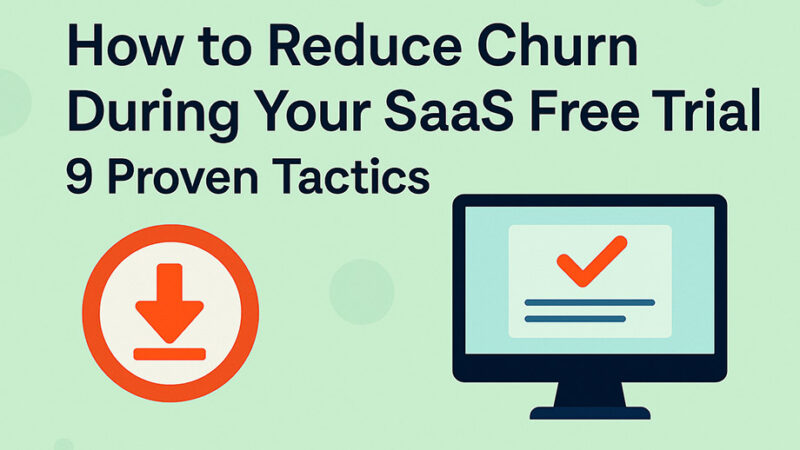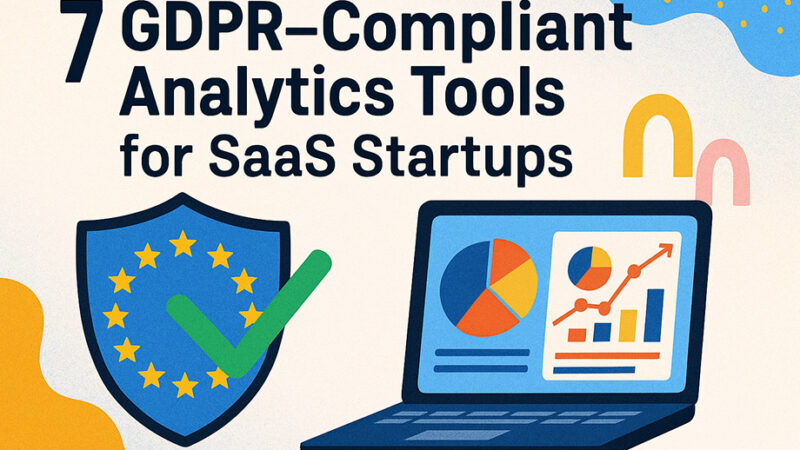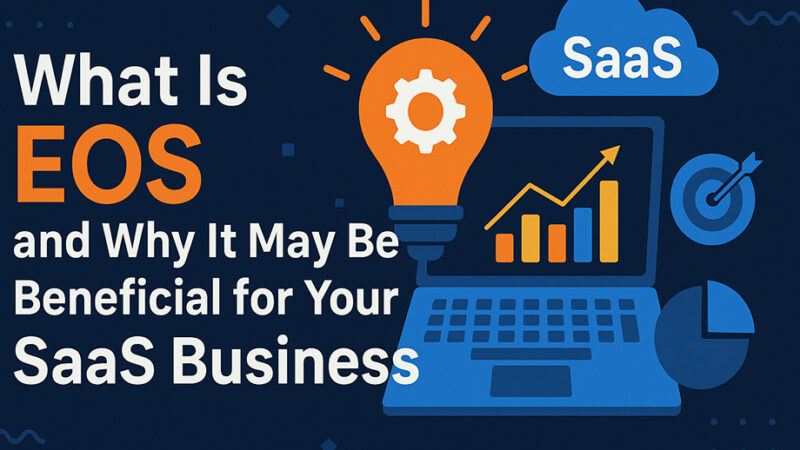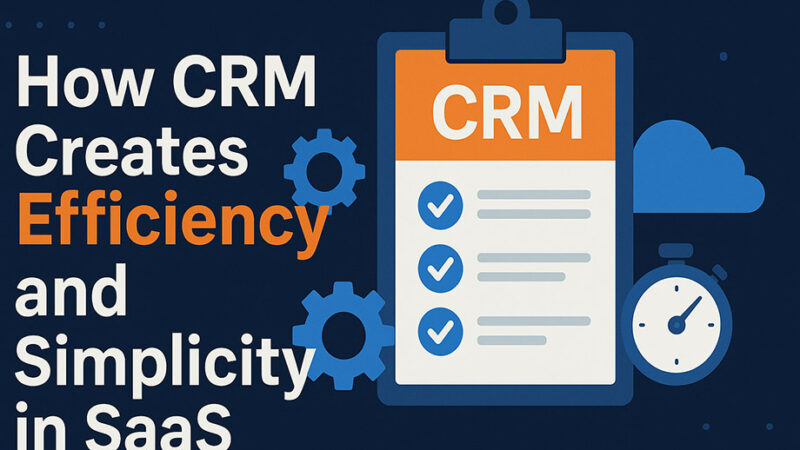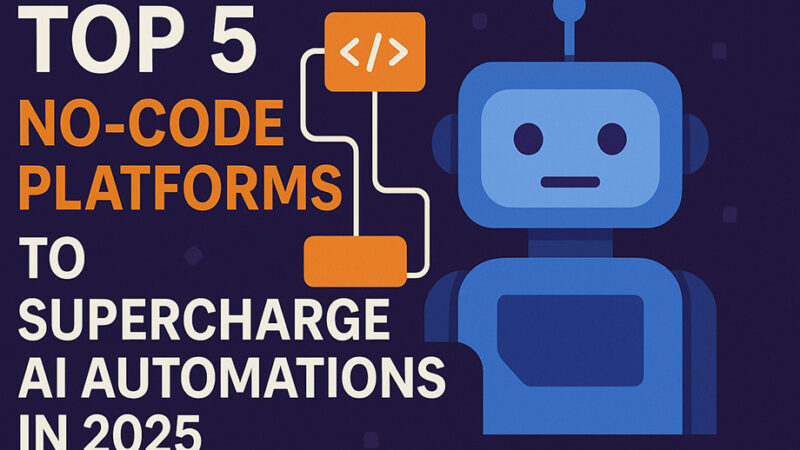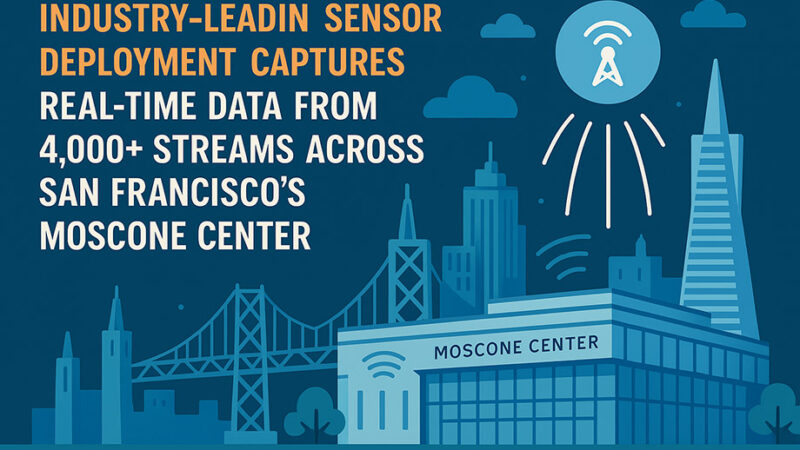5 Best Zapier Alternatives for SaaS Startups (Budget-Friendly + Powerful)
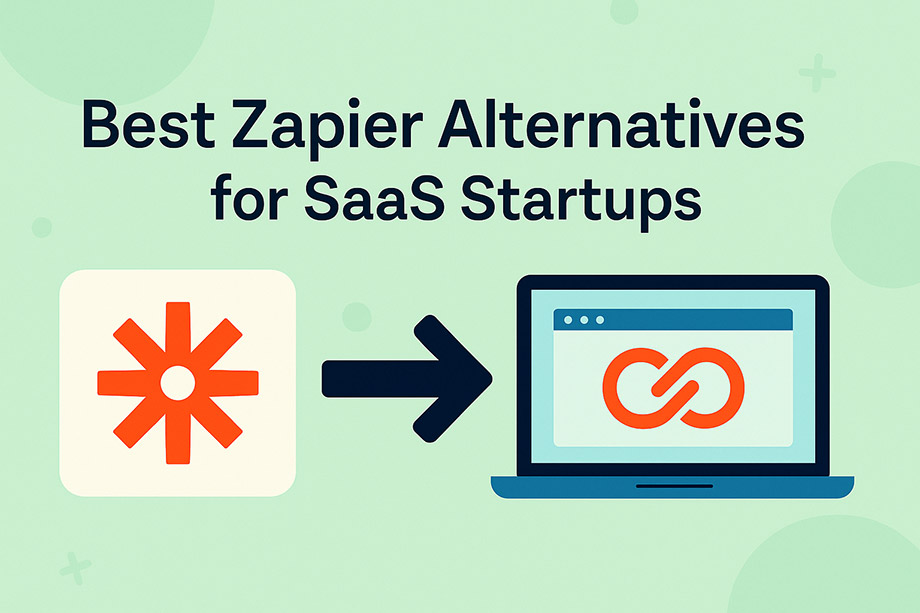
Zapier revolutionized business automation, but for SaaS startups, it often becomes a costly bottleneck rather than a growth enabler. As your user base scales and workflows become more complex, Zapier’s per-task pricing model can quickly consume your entire operations budget, sometimes costing more than your hosting infrastructure.
The reality is harsh: many SaaS teams find themselves paying $200-500+ monthly for automation that should be enhancing profitability, not draining it. Meanwhile, they’re constrained by Zapier’s limitations in handling complex logic, error management, and custom integrations that growing SaaS products desperately need.
This guide examines five powerful Zapier alternatives specifically chosen for their SaaS-friendly features: budget-conscious pricing, robust API handling, and the flexibility to grow with your startup. Whether you’re bootstrapping an MVP or scaling toward Series A, these tools offer the automation power you need without the enterprise price tag.
What to Look for in a Zapier Alternative
Choosing the right automation platform requires understanding your specific SaaS needs and growth trajectory.
Budget Considerations Beyond Monthly Fees While Zapier’s task-based pricing seems reasonable initially, SaaS companies often trigger thousands of automated actions daily. A simple user onboarding flow might involve 10+ tasks per new signup, making costs spiral quickly. Look for platforms offering unlimited tasks, generous free tiers, or predictable flat-rate pricing that won’t penalize your growth.
Workflow Complexity and Logic Handling SaaS applications require sophisticated automation beyond simple trigger-action pairs. You need conditional logic, data transformation, error handling, and multi-branch workflows. The best alternatives provide visual workflow builders that can handle complex business logic without requiring extensive technical knowledge.
API Integration Capabilities Your automation platform becomes the nervous system of your SaaS stack. It must handle webhook responses, API rate limiting, authentication management, and custom data formatting. Prioritize platforms with robust HTTP request capabilities, built-in error retry mechanisms, and support for complex authentication schemes.
Self-Hosted vs. Cloud Deployment Open-source alternatives like n8n offer complete control and eliminate per-task costs but require infrastructure management. Cloud solutions provide convenience and reliability but may limit customization. Consider your team’s technical capabilities and long-term scaling plans when evaluating deployment options.
Top Zapier Alternatives for SaaS
Make (formerly Integromat)
Make stands out as the most sophisticated visual automation platform, offering enterprise-grade capabilities at startup-friendly prices. Its scenario-based approach and powerful data manipulation tools make it particularly well-suited for complex SaaS workflows.
Key Features:
- Visual workflow builder with advanced branching
- Powerful data transformation and filtering tools
- Built-in error handling and retry mechanisms
- Extensive API connector library
- Real-time execution monitoring
SaaS Use Cases:
- Multi-step user onboarding sequences
- Complex lead scoring and routing
- Automated customer health monitoring
- Revenue recognition and billing automation
- Cross-platform data synchronization
Visual Builder vs. Code: Make excels at complex visual workflows that would require significant coding in other platforms. Its drag-and-drop interface handles conditional logic, loops, and data transformations intuitively, while still allowing custom code when needed.
Pros:
- Excellent value for complex workflows
- Superior error handling and debugging tools
- Strong community and template library
- Handles high-volume automation efficiently
- Advanced scheduling and timing controls
Cons:
- Steeper learning curve than simpler alternatives
- Interface can feel overwhelming initially
- Limited free plan compared to competitors
- Some advanced features require higher tiers
Pricing: Free plan includes 1,000 operations monthly. Paid plans start at $9/month for 10,000 operations, scaling to $29/month for 40,000 operations.
n8n
n8n represents the open-source revolution in workflow automation, providing unlimited scalability and complete customization for technically-minded SaaS teams. Its fair-code license and self-hosting capabilities eliminate vendor lock-in while offering enterprise features.
Key Features:
- Self-hosted deployment with unlimited workflows
- Extensive node library with custom node creation
- Advanced JavaScript code execution
- Webhook support with custom authentication
- Built-in credential management
SaaS Use Cases:
- Custom API integrations for niche services
- High-volume data processing pipelines
- Internal tool automation and notifications
- Customer data enrichment workflows
- Automated testing and deployment triggers
Visual Builder vs. Code: n8n bridges the gap between no-code and full development, allowing teams to start with visual workflows and add custom JavaScript nodes as needed. This flexibility makes it ideal for SaaS teams with mixed technical capabilities.
Pros:
- No per-task limitations with self-hosting
- Complete control over data and infrastructure
- Highly customizable and extensible
- Strong developer community
- No vendor lock-in concerns
Cons:
- Requires infrastructure management expertise
- Cloud version has usage limitations
- Smaller pre-built connector ecosystem
- Learning curve for non-technical users
Pricing: Self-hosted version is free. Cloud plans start at $20/month for 2,500 executions, scaling to $50/month for 10,000 executions.
Pabbly Connect
Pabbly Connect focuses on providing unlimited automation at a fixed price, making it extremely attractive for high-volume SaaS operations. Its straightforward pricing model eliminates the anxiety of scaling automation workflows.
Key Features:
- Unlimited tasks and workflows on all plans
- Multi-step workflow automation
- Built-in delay and scheduling functions
- Extensive SaaS application integrations
- Real-time sync capabilities
SaaS Use Cases:
- High-volume lead processing and distribution
- Automated customer support ticket routing
- Bulk data synchronization between platforms
- Recurring billing and subscription management
- Social media and content automation
Visual Builder vs. Code: Pabbly emphasizes simplicity over sophistication, providing an intuitive visual builder that handles most SaaS automation needs without requiring technical expertise.
Pros:
- Truly unlimited tasks on all paid plans
- Simple, predictable pricing structure
- Good selection of SaaS integrations
- Reliable performance for basic workflows
- No learning curve for Zapier users
Cons:
- Limited advanced logic and branching options
- Basic error handling capabilities
- Fewer customization options than competitors
- Less sophisticated data transformation tools
Pricing: Free plan includes 100 tasks monthly. Paid plans start at $19/month for unlimited tasks, with higher tiers adding team features and priority support.
Integrately
Integrately positions itself as the user-friendly automation platform with ready-made automation recipes for popular SaaS tools. Its template-first approach helps startups implement proven workflows quickly without extensive configuration.
Key Features:
- Pre-built automation templates for popular SaaS tools
- One-click automation setup for common workflows
- Multi-app integrations with conditional logic
- Built-in data mapping and transformation
- Live chat support on all plans
SaaS Use Cases:
- Quick CRM and marketing tool integration
- E-commerce order processing automation
- Social media management workflows
- Customer onboarding and nurturing sequences
- Team productivity and project management automation
Visual Builder vs. Code: Integrately prioritizes ease of use over complexity, offering a streamlined visual builder that focuses on getting automations running quickly rather than handling complex logic.
Pros:
- Extensive template library for quick setup
- User-friendly interface with minimal learning curve
- Good customer support and onboarding
- Reasonable pricing for growing startups
- Reliable performance for standard workflows
Cons:
- Limited customization options for complex workflows
- Smaller integration ecosystem than major competitors
- Basic error handling and debugging tools
- Less suitable for highly technical teams
Pricing: Free plan includes 100 tasks monthly. Paid plans start at $19.99/month for 10,000 tasks, scaling to $49.99/month for 100,000 tasks.
Activepieces (Open-Source)
Activepieces represents the newest generation of open-source automation platforms, combining modern design principles with powerful customization capabilities. Its focus on developer experience and self-hosting makes it particularly appealing for SaaS teams prioritizing control and cost-effectiveness.
Key Features:
- Modern, intuitive visual workflow builder
- Self-hosted deployment with Docker support
- Custom piece development with TypeScript
- Webhook triggers and HTTP requests
- Built-in authentication management
SaaS Use Cases:
- MVP automation without recurring costs
- Custom integration development for unique tools
- Internal process automation and notifications
- Development workflow and CI/CD integration
- Data processing and transformation pipelines
Visual Builder vs. Code: Activepieces offers the most modern visual builder experience among open-source alternatives, while maintaining extensibility through custom TypeScript pieces for technical requirements.
Pros:
- Completely free with self-hosting
- Modern, responsive user interface
- Growing ecosystem of pre-built pieces
- Strong focus on developer experience
- Active community and regular updates
Cons:
- Newer platform with smaller user base
- Limited third-party integrations compared to established platforms
- Requires technical expertise for deployment
- Documentation still evolving
Pricing: Completely free for self-hosted deployment. Cloud version pricing not yet announced.
Comparison Table
| Platform | Free Plan | SaaS Integrations | Multi-Step Support | Error Handling | Best For |
|---|---|---|---|---|---|
| Make | 1,000 ops/month | 1,400+ apps | Advanced | Excellent | Complex workflows |
| n8n | Self-hosted unlimited | 200+ nodes | Advanced | Good | Technical teams |
| Pabbly Connect | 100 tasks/month | 700+ apps | Good | Basic | High-volume automation |
| Integrately | 100 tasks/month | 1,000+ apps | Good | Basic | Quick implementation |
| Activepieces | Unlimited (self-hosted) | 100+ pieces | Good | Good | Cost-conscious startups |
Who Should Use What?
Startups with <$1k MRR For pre-revenue or early-stage SaaS companies, cost control is paramount. Activepieces offers unlimited automation with self-hosting, while n8n provides enterprise capabilities without recurring fees. Both require technical setup but eliminate long-term costs that could impact runway.
Budget-conscious teams should also consider Pabbly Connect’s unlimited task plans, which provide predictable costs as automation scales. The $19/month investment often pays for itself by eliminating the need for manual processes.
Scale-ups Needing More Flexibility Growing SaaS companies require sophisticated automation that can adapt to changing business requirements. Make excels in this category, offering advanced workflow capabilities at reasonable prices. Its visual builder handles complex business logic while maintaining accessibility for non-technical team members.
n8n becomes increasingly attractive as teams develop technical capabilities, providing unlimited customization and eliminating concerns about vendor limitations or pricing changes.
Teams Preferring No-Code vs. Developer-Owned Marketing and operations teams typically prefer platforms like Integrately or Pabbly Connect, which prioritize ease of use and quick implementation. These platforms provide sufficient power for most SaaS automation needs without requiring technical expertise.
Developer-focused teams often gravitate toward n8n or Activepieces, appreciating the ability to create custom integrations and maintain complete control over automation infrastructure.
FAQ
Is Make better than Zapier for SaaS teams? Make generally provides better value for SaaS companies due to its operation-based pricing model and superior handling of complex workflows. While Zapier charges per task (meaning a single user action might trigger multiple billable tasks), Make’s operations model is more predictable and cost-effective for multi-step automations.
Make also offers more sophisticated error handling, data transformation capabilities, and conditional logic—features essential for reliable SaaS automation. However, Zapier maintains a larger integration ecosystem and simpler user interface for basic workflows.
What’s the best free alternative for MVPs? For MVP-stage SaaS products, self-hosted n8n or Activepieces provide the most value by eliminating recurring automation costs entirely. Both platforms offer sufficient integration capabilities for early-stage needs while providing room for growth.
If self-hosting isn’t feasible, Pabbly Connect’s free 100-task plan often suffices for MVP validation, with a clear upgrade path to unlimited tasks at $19/month when ready to scale.
How do I migrate from Zapier without disrupting operations? Start by cataloging your existing Zapier workflows and identifying the most critical automations. Implement these high-priority workflows in your chosen alternative platform while running both systems in parallel.
Most platforms offer similar trigger-action paradigms, making migration conceptually straightforward. However, plan for testing periods and have rollback procedures ready. Consider migrating workflows gradually rather than attempting a complete switch overnight.
Can these alternatives handle enterprise-level SaaS automation? Make and self-hosted n8n can absolutely handle enterprise-scale automation, often with better performance and cost-effectiveness than Zapier. Make’s infrastructure is designed for high-volume operations, while n8n’s self-hosting eliminates external limitations entirely.
For true enterprise needs, consider n8n’s enterprise edition or Make’s higher-tier plans, which provide additional reliability, support, and compliance features.
Conclusion
The automation landscape has evolved significantly beyond Zapier’s early dominance, with several platforms now offering superior value propositions for SaaS startups. Your choice depends primarily on three factors: technical capabilities, budget constraints, and workflow complexity requirements.
Best for Budget: Self-hosted n8n or Activepieces eliminate recurring costs entirely, while Pabbly Connect provides predictable unlimited-task pricing for teams preferring cloud solutions.
Best for Flexibility: Make offers the most sophisticated workflow capabilities at reasonable prices, making it ideal for growing SaaS companies with complex automation needs.
Best for Simplicity: Integrately provides the smoothest migration path from Zapier with extensive templates and user-friendly interfaces.
The key insight is that you don’t need to choose permanent vendor lock-in. Many successful SaaS companies start with free or low-cost alternatives during their MVP phase, then migrate to more sophisticated platforms as their automation needs and revenue grow.
Ready to reduce your automation costs while gaining more control? Start by identifying your three most expensive Zapier workflows and recreating them in Make or n8n. You’ll likely discover that the alternatives not only cost less but also provide better error handling, more reliable execution, and greater customization options.
Take action this week: Sign up for free trials of Make and Pabbly Connect, then migrate one simple workflow to each platform. Compare the setup process, execution reliability, and cost implications. Most SaaS teams find they can reduce automation costs by 60-80% while improving functionality—making this one of the highest-ROI optimizations you can implement.


